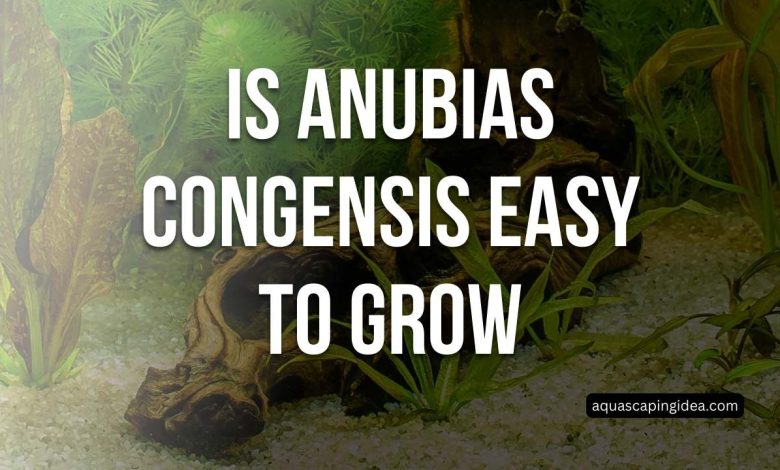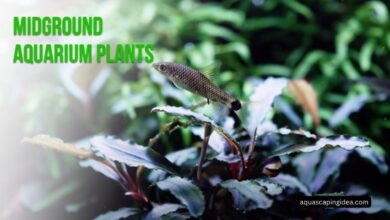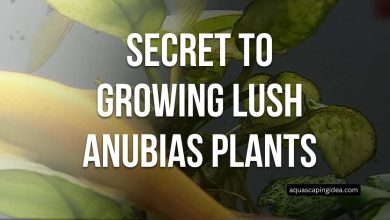Is Anubias Congensis Easy To Grow?

Aquarium plants impart tranquility and beauty to home fish tanks. But many aquatic species perplex freshwater hobbyists with demanding light, CO2, and nutrient requirements. Achieving that picturesque aquascape seems to require mastering an arcane green thumb not Programming 101.
Growing Anubias Congensis with Ease
Yet a singular genus defies the difficult reputation…Anubias. Among these tough-leaved treasures, Anubias barteri var. Congensis shines brightest as the effortless grower boasting lush textures and vibrant tones.
Indeed, nothing establishes beginner credibility faster than cultivating a flourishing patch of Anubias Congensis. The plant practically thrives on benign neglect – making it one of the most foolproof aquatic species around.
But what precisely makes Congensis so easygoing? And what basic care does it still require for optimal expansion and presentation? Let’s demystify Anubias care for newcomers and experienced aquarists alike.
What Makes Anubias Congensis a Beginner-Friendly Plant?
Origins & Bioology Hailing from gentle African lake shallows and streams, Congensis grows accustomed to warm, mineral-poor conditions in gentle water motion and shaded light. Thick waxy leaves with limited surface area restrict water loss while extracting ample dissolved elements.
Rhizome Root System Anchoring the entire plant is a thick green rhizome pad – not typical root structures. Small hairy roots sprout to absorb traces of nourishment from the surroundings. But the main rhizome stores energy reserves like a camel’s hump, making Congensis indifferent to rich sediments.
Slow Growth Rate Rather than racing to outcompete other plants, Congensis focuses its efforts on simply sustaining itself. Expanding just a few inches a year allows the foliage to retain integrity even in suboptimal conditions. Forget constant trimming sessions – this is a set-it-and-forget-it species.
Minimal Nutrient Demands Without the urgent need to metabolize large amounts of macros and micros, Anubias gets by on limited minerals. Some decaying organic matter here, a few fish food remnants there – that’s sufficient to gradually widen its footing. No need for complicated fertilization routines that fast growers require.
Durable Foliage Thick leaf cell structure deters most algae species from taking hold. And the bitter, iron-rich taste discourages hungry grazers. Congensis establishes durable footholds other plants can’t match as they’re swiftly devoured.
Cultivation Fundamentals
Water Conditions Given its African Congo origins, Anubias thrives in familiar soft, warm, flowing water:
- pH: 6.0-7.5
- Temperature: 72°-82°F
- Hardness: 4-8 KH/GH
Avoid drastic chemistry swings outside these ranges. Consistency enables Congensis to incrementally acclimate much like its gradual growth pattern.
Aquarium Setup Tips
Congensis loves shaded spots and horizontal positioning. Use rock crevices, wood, overhangs, etc to recreate African riverside elements and display the foliage prominently.
Lighting Needs
Bright light fuels faster growth but also photosynthesis-related stress. Instead provide gentle filtered daylight or moderate 50-100 PAR artificial lighting for 10-12 hours daily. No direct sunlight nor complete darkness either.
Substrate Selection
Nutrient-rich sediment offers negligible benefits. Instead, focus on stable mineral substrates like gravel that won’t decompose and ruin water parameters. Laterite, Flourite, and aquasoils excel too. Even inert sands work temporarily while establishing root holds.
Fertilization Approach
Apply root tabs or substrates containing trace elements like iron, potassium, etc. around newly planted specimens. Established clusters often ignore further fertilization thanks to their efficient rhizome reserves and unhurried metabolisms.
The Hardscape Hybrid Approach
Congensis thrives when attached to hardscape materials like suspended wood, lava rock, etc. This added stability lets its foliage shine. Take inspiration from naturalUbuntu designs where Anubias grow half-emerged on partly submerged boulders and bogwood.
Ongoing Maintenance This hardy plant survives downright neglect at times. But sustainable health still requires basic husbandry. Address accumulating organics via monthly water changes and wipe any dust or debris from leaf surfaces. Trim yellowing sections and replant the vigorous green cuttings.
Troubleshooting Issues
Potential problems and solutions include:
Stunted growth – Increase ferts, nutrition, appropriate light intensity
Leaf yellowing/browning – Assess water quality and chemistry
Algae growth – Improve light/nutriebt balance, manually remove what you can
Leaf holes – Check for snail infestations, reduce feeding to decrease waste
Floating up – Replant/reattach if substrate disturbed, use lead weights/pebbles to anchor newly planted divisions
Catch issues early before they spiral and require interventions like antibiotic treatments, major trimming, etc. Otherwise, Anubias practically cares for itself as a genuinely easygoing aquatic plant!
Frequently Asked Questions
Why is my Anubias dying?
The most common killers are poor water quality, extremes in lighting or chemistry, or rhizome rot from complete burial. Analyze husbandry and troubleshoot accordingly.
How often should I fertilize Anubias?
Apply root tabs or nutrient-rich substrate at planting. Further fertilization is rarely necessary for established growth unless deficiencies emerge. Focus on nutrition and organics management instead.
Can I grow Anubias in just gravel or sand?
Yes! Anubias aren’t heavily root feeders. Plain gravel and sands suffice as long as water chemistry remains stable long-term. Laterite enhances growth but isn’t essential.
Does Excel liquid carbon help Anubias grow faster?
Yes, Exce’s bioavailable carbon promotes quicker expansion. But take care to slowly acclimate Congensis to avoid shocking the foliage. Many tank plant species react badly to sudden Excel changes.
Conclusion
Still intimidated by perceived advanced plant keeping? Let Anubias Congensis change your mind forever. This undemanding African native makes aquascaping accessible for everyone by practically growing itself. Just focus on providing gentle water conditions and filtered lighting – the plant handles the rest thanks to its rugged origins and stretch-resource rhizome biology. Before long, lush ever-widening Anubias pads reign supreme as the centerpiece specimens. And that sense of pride and wonder welcoming new life into your home ecosystem returns at full force. When it comes to planting confidence, nothing beats Congensis for beginning and veteran aquarists alike.



2 Comments